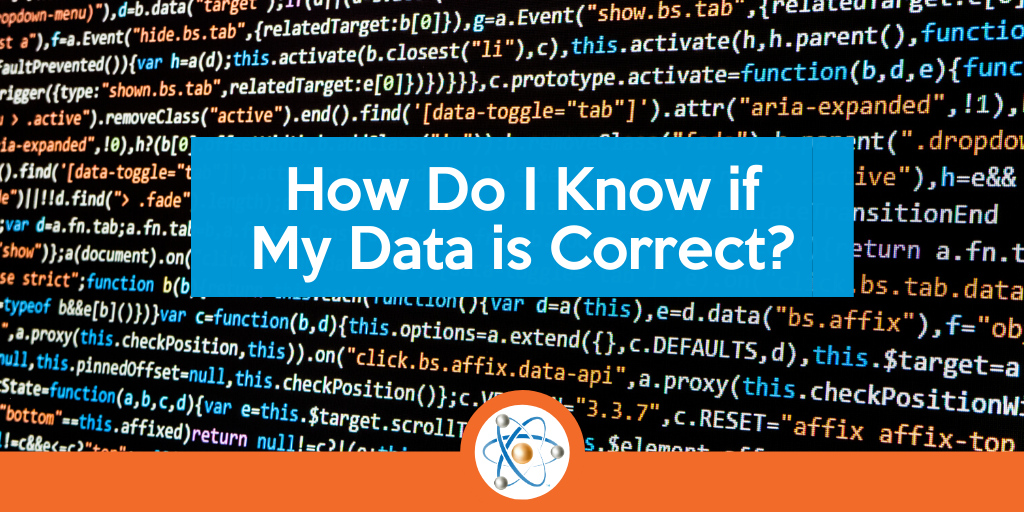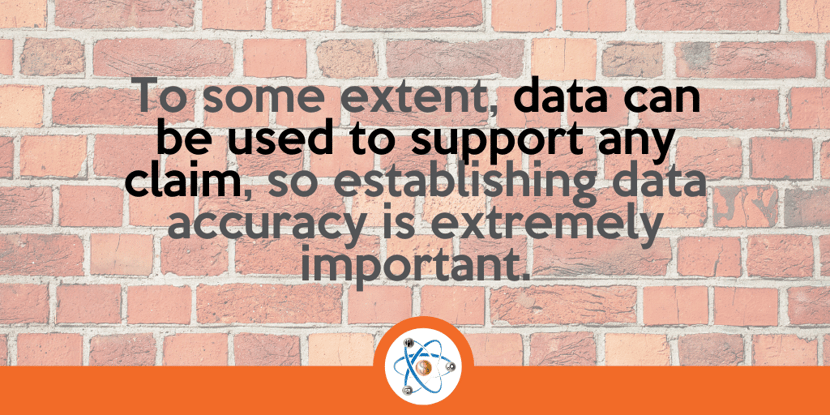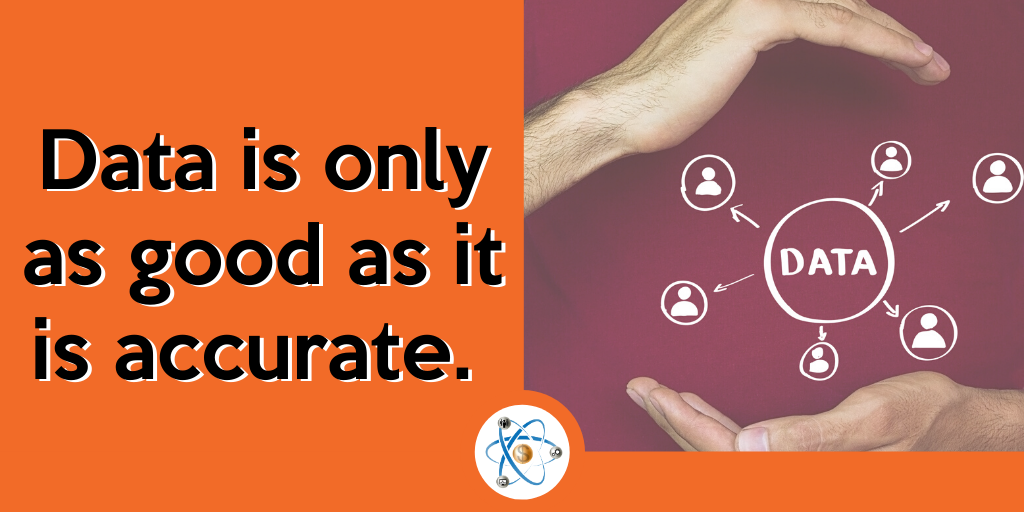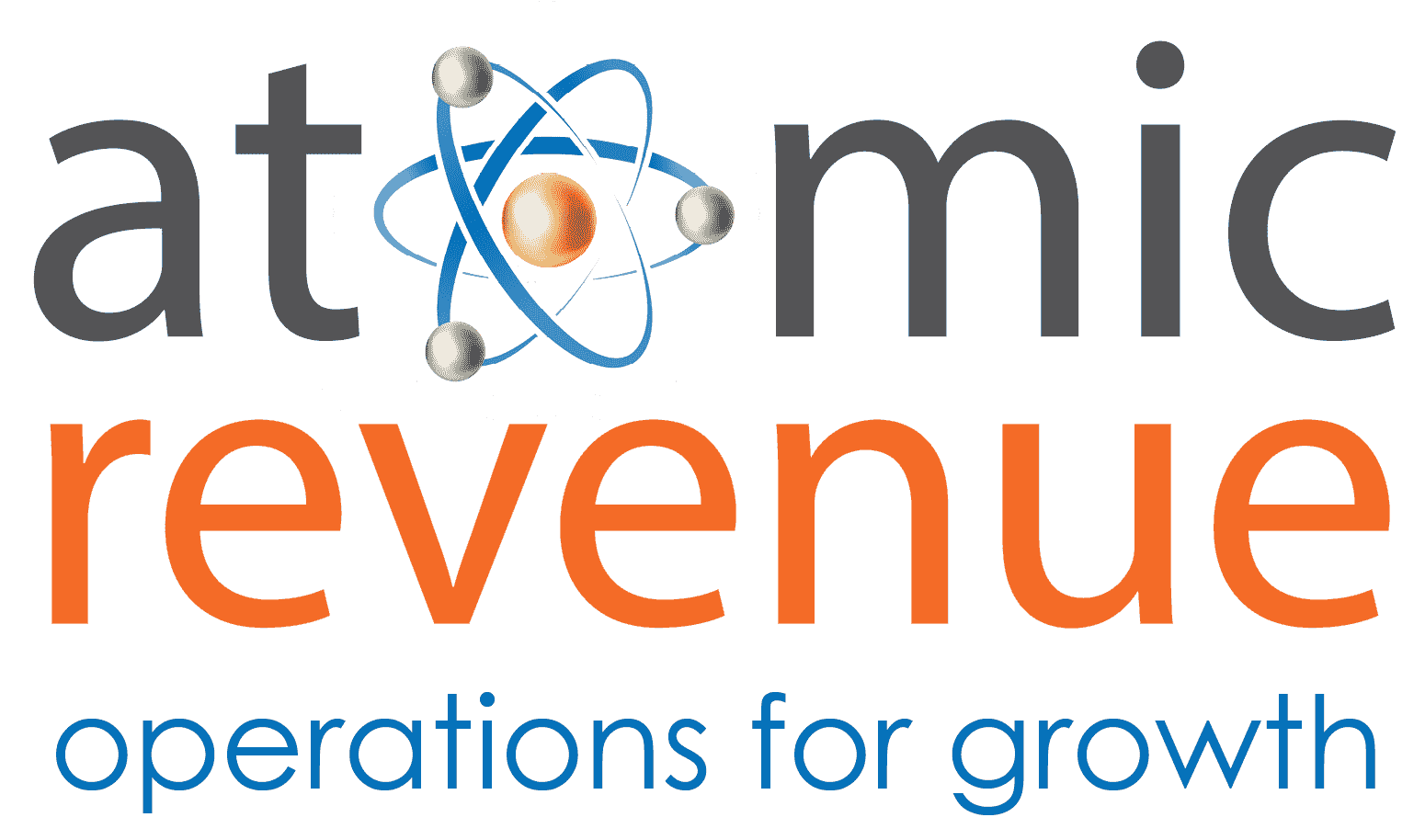
As more business moves online, people are working remotely and using digital tools more and more. The digital strategy conversation is increasingly relevant to today’s workplace. As a piece of this, it is important to understand where data comes from and if it is correct. More specifically, developing an understanding of what the data means brings strength to any digital strategy.
Process of Improving the Accuracy of Data
- Identify Which Information is Important to Data Strategy
- Look at the Data Source
- Determine "What Does the Data Really Mean?"
- Context Improves Data Understanding & Accuracy
- How Old is the Data?
- Establishing Data Accuracy is Extremely Important to Your Outcome
- The Best Way to Optimize and Simplify Your Data
As important as it is to be data-focused, particularly in your digital marketing and digital operations efforts, data is only as good as it is accurate. This starts with understanding what data accuracy means.
“Two values can be both correct and unambiguous and still cause problems. For example, the data values “St. Louis” and “Saint Louis” may both refer to the same city, however, the recordings are inconsistent, and thus at least one of them is inaccurate.” – eTutorials.org
There is a lot to be learned from understanding that the right data will continuously improve and inform a digital strategy, which in turn, will convert targets into customers. To learn more about how to gather and use accurate data to increase your marketing ROI, read on.
What Information is Important to My Digital Strategy?
The first step to understanding data accuracy is to clarify what information is being determined by the data and which data points are relevant to what you are trying to achieve (often there is more data available than is needed to draw a conclusion). These are commonly referred to as KPIs or Key Performance Indicators, which highlight key data points to monitor and answer important questions in an organization.
Determining what information is important to get the desired outcome from your digital strategy provides relevance to the data. For example, knowing how many people visit your company website is useful, but how does that translate into revenue? If a certain amount of website visitors become new leads, and a percentage of those become new clients, determining the overall impact of the data is possible. Additionally, understanding the difference between new and returning website visitors can provide additional insights.
It may seem daunting to think of this in conceptual terms of digital data. Swap this out with a physical world example. Of people who see a magazine ad, how many visit the store? Of the people who come into the store, how many purchased something? Website visitors and online conversions are the same scenarios. Remembering that digital data is representative of real people and actions in the physical world will help sort out what is important to know and what is not.

The Data Source: Accuracy & Precision of Data
The next important step to determining the accuracy of the data is to evaluate where it is coming from. Is it direct, raw data straight from the reporting source such as Google Analytics, or is it processed data that has been placed into a graphical representation?
If the data has been processed or is coming from a third-party source, be sure to keep this in context and do your due diligence for accuracy. Additionally, if it is a third-party source, is there a point this source is trying to prove, or does it have a vested interest in the data supporting the argument? It is equally important to consider what data is not being shown or what data is not available.
Another determining factor for third-party sites is whether or not they have permission to view the data and how they access the data. Many social media reporting tools do not have the properly approved partnerships with Facebook, for example, to provide data and simply scrape it off of public domains. This type of data is often inaccurate and may be problematic.
For internal data, some examples include lead tracking in revenue. If there are two salespeople on a call and they both add a new lead to their system, is this being tracked accurately? That may depend on the CRM system in place.

What Does the Data Really Mean?
With digital marketing sources especially, taking the extra step to understand what a data point means can make a huge difference. For profit, a dollar equals a dollar, but what does engagement mean for marketing?
In Facebook Advertising, for example, engagements are typically considered a reaction, common, share, or click. However, video views are now also considered engagement. What the “video-watched” data point can represent is a three-second auto-play of the video as the viewer scrolls. A video post may report 100 times more engagement than a photo, but this engagement may simply mean more people saw three seconds of the video but did nothing, where, in contrast, the picture had more comments and shares. Which data point is more valuable?
In sales terms, this example can be examined in terms of leads. The data may report ten new leads, but what does that mean? Not all new contacts are qualified leads for a business. For example, one report showing 50 new leads may look better than one showing ten; however, the ten new leads may actually be qualified to buy from your business whereas the 50 are not.
Think of it this way – would you prefer ten people coming into your shop and buying something or 50 people walking in and browsing then leaving without a purchase?
Define what your company's specific data points mean to your conversion process.
Context Improves Data Understanding
In order to understand data accuracy, the data must always be put into context. Let’s take a look at some sales team data for Company X. For Q1, the sales department reported the following statistics:
- New Contacts added – 4,532
- New Leads – 452
- Sales Calls – 424
- Proposals Sent – 62
- Follow-up Calls – 42
- Closed Deals – 45
There are many elements to be considered in this data. For example, are any of the new leads recurring customers? How many of the sales calls were to the same leads? Are the closed deals a direct result of the work done this quarter, or did those deals start last quarter? What about all the emails, calls, or texts that were not recorded or entered incorrectly?
Logging, tracking, and managing this data, which can be done with automation, is something many businesses don’t do, which means they are flying blind when it comes to minimizing customer acquisition costs (CACs) and maximizing marketing ROI. Making good decisions based on actual data cannot happen without accurate data management.
How Old is the Data?
The final factor is to look at how old the data is when you are looking at it. Think about census data from 2010. How accurate is census data from 2010 going to be today when talking about the population of a town? Not to mention other factors such as how many people participated, if there were mistakes in the recording, and whether city limits have changed.
Establishing & Improving Data Accuracy is Extremely Important to Your Outcome
Data accuracy in digital operations is a broad topic with many businesses and their marketing teams working to understand if the data they are using to grow revenue is correct. To some extent, data can be used to support any claim, so establishing data accuracy is extremely important.
- Start with a basic understanding of what questions need to be answered when analyzing the data.
- Next, evaluate the data source and understand where the data is coming from. Understanding if the data is correct is to understand what the data points actually mean. A clear definition saves confusion.
- Consider other factors such as lead generation, sales activity, emails, texts, etc., and always put the data into context.
- Implement a data automation tool to compile, measure, and track data to make this process seamless and precise.
The Best Way to Optimize and Simplify Your Data
With the sales process turning more and more to online lead generation, nurturing, and conversions, there’s no time to wait to learn what the right data can do for you and how quickly it can ramp up revenue.
The best way to ensure data accuracy in digital operations is to work with trusted professionals who understand data and can implement a KPI automated system customized to your business needs.
To learn how you can optimize and simplify your data to launch revenue, reach out today to set up a no-obligation meeting to learn more.
About Atomic Revenue
Based in St. Louis, Missouri, and Denver, Colorado, with a nationwide team of more than 50, Atomic Revenue helps regional and national B2B companies, primarily in manufacturing, engineering, technology, and professional services, make more money through revenue operations. Our revenue operations methodology improves profit margins, increases the lifetime value of customers, and creates sustainable processes and profitability fueled by data.





